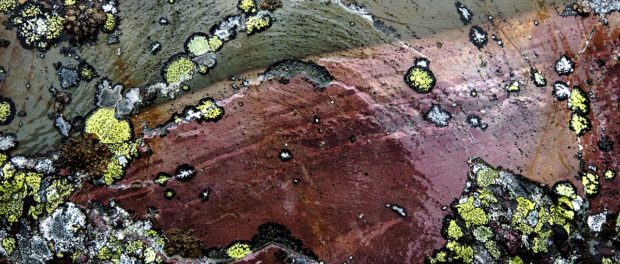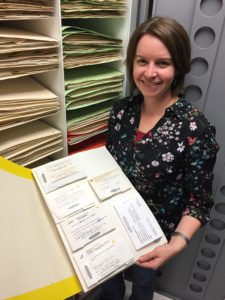Digitizing Lichens & Bryophytes

 Across the planet’s terrestrial surface lives a layer of organisms that cannot be seen with the naked eye. Lichens and bryophytes are hosts to these cryptobiotic communities that play a critical role in stabilizing soil, preventing erosion, absorbing rainfall, and providing nutrients for the growing plants around them. This hidden life creates a critical miniature forest that serves as an important habitat for tiny animals and forms a “living skin” found throughout the world, from canyon deserts to polar icecaps.
Across the planet’s terrestrial surface lives a layer of organisms that cannot be seen with the naked eye. Lichens and bryophytes are hosts to these cryptobiotic communities that play a critical role in stabilizing soil, preventing erosion, absorbing rainfall, and providing nutrients for the growing plants around them. This hidden life creates a critical miniature forest that serves as an important habitat for tiny animals and forms a “living skin” found throughout the world, from canyon deserts to polar icecaps.
Jessica Budke, director of the UT Herbarium (TENN) and her colleagues from 25 institutions across the United States received a grant from the National Science Foundation to image and digitize associated metadata for close to 1.2 million lichen and bryophyte specimens housed in their collections.
Natural history collections are a physical record of our planet’s biodiversity across space and time,” said Budke, who is also an assistant professor in the UT Department of Ecology and Evolutionary Biology. “These specimens not only serve as records of the past, but they are a critical resource for our future. They help us to answer important questions surrounding invasive species, conservation biology, and help us to describe species that are new to science.”
The project, Building a Global Consortium of Bryophytes and Lichens: Keystones of Cryptobiotic Communities (GLOBAL), will enable researchers from around the world to access specimen metadata and photos of the plants. Budke is the lead principal investigator for the project.
“For the first time we will be taking photos not just of the label information, but also the physical organisms, which will enable researchers to digitally peek inside the packet to collect data from these specimens remotely,” Budke said. “The more data about these specimens that is available online enables researchers to expand the scope and impact of their research questions.”
 The UT Herbarium is one of the largest plant natural history collections in the southeast with more than 640,000 specimens, including more than 180,000 mosses and lichens.
The UT Herbarium is one of the largest plant natural history collections in the southeast with more than 640,000 specimens, including more than 180,000 mosses and lichens.
“Digitization is a game changer,” said Eric Tepe, curator of the Margaret H. Fulford Herbarium at the University of Cincinnati, one of the institutions involved in the project. “For centuries, natural history collections have been locked up in museums, available only to a handful of visitors. Large-scale digitization efforts, like this project, open the museum doors to the world, making specimen data and, in many cases, images freely available to everyone.”
Researchers with the project will partner with Zooniverse, a citizen science web portal, to develop an online platform for citizen scientists to make observations on character traits that can improve the information and fill in some of the gaps not covered by the scientific labeling process.
These integrated data will form a critical resource for evolutionary and ecological studies that researchers hope will lead to a deeper understanding of the role bryophytes and lichens play in carbon and nitrogen cycling, the evolution of biodiversity, and more.
In addition to collecting information about the specimens, undergraduate students at the partner institutions will have an opportunity to receive funding for professional training in image capture and processing, digitization, and collections management. Researchers will leverage local resources to promote underrepresented students in STEM fields and integrate a public outreach component to K-12 science classes and other science youth groups.
“This project represents a collaborative effort of 25 major research institutions,” Budke said. “It will push the field of organismal biology forward by leaps and bounds, enabling us to tackle large-scale biology questions that none of us could answer alone.”
Originally published online at eeb.utk.edu August 26, 2020.
Leave a comment